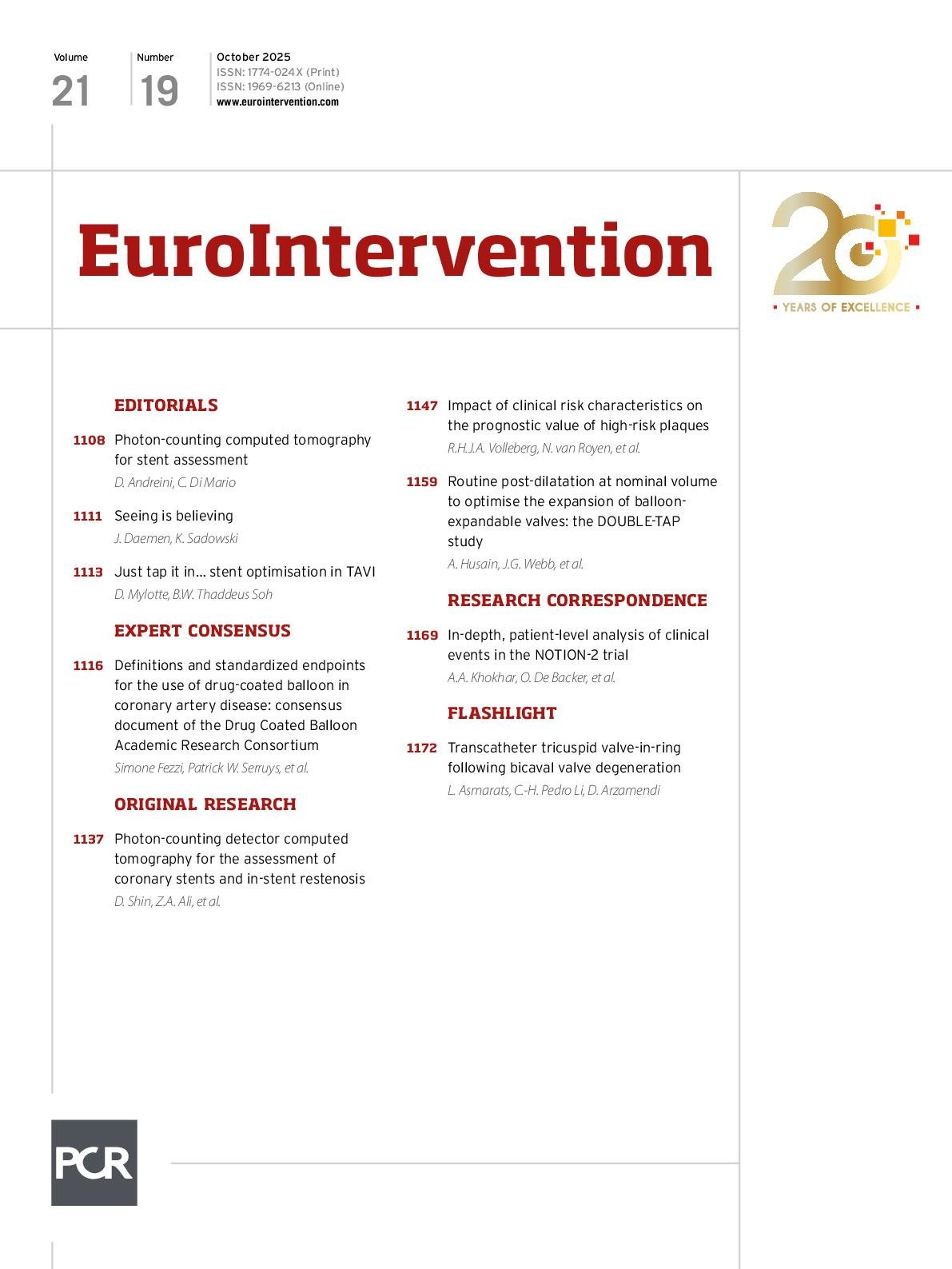Abstract
Background: Incomplete expansion of balloon-expandable (BE) transcatheter heart valves (THVs) is sometimes treated by ad hoc post-dilatation with an overfilled or larger valvuloplasty balloon. The efficacy of this approach has not been rigorously evaluated, although increased risk for adverse events has been demonstrated. Observational experience suggests that post-dilatation using the original delivery system balloon at the identical filling volume (i.e., double-tap) may routinely improve the degree of THV expansion with low risk.
Aims: We sought to assess the safety and efficacy of a strategy of routine double-tap after BE transcatheter aortic valve implantation (TAVI).
Methods: Patients undergoing TAVI with the SAPIEN 3 Ultra (S3U) valve were prospectively included. Patients with severe annular or subannular calcification were excluded. A validated method of fluoroscopic analysis was utilised to assess the cross-sectional area at the inflow, midpoint, and outflow of the THV before and after double-tap. Thirty-day clinical outcomes were documented.
Results: Routine double-tap was performed in 102 patients. Despite nominal deployment, all patients had some degree of THV underexpansion after the first inflation. Fluoroscopic analysis documented an increase in minimal THV expansion by cross-sectional area of 9.8% for the 20 mm S3U (p=0.151), 9.9% for the 23 mm S3U (p<0.001), 9.2% for the 26 mm S3U (p<0.001), and 8.6% for the 29 mm S3U (p=0.002). There was no stroke or cardiovascular mortality at 30 days.
Conclusions: In favourable anatomy, routine double-tap after BE TAVI improved THV expansion with no safety concerns. The impact of this strategy on THV function, haemodynamic profile, and durability remains to be determined.
Sign up for free!
Join us for free and access thousands of articles from EuroIntervention, as well as presentations, videos, cases from PCRonline.com

